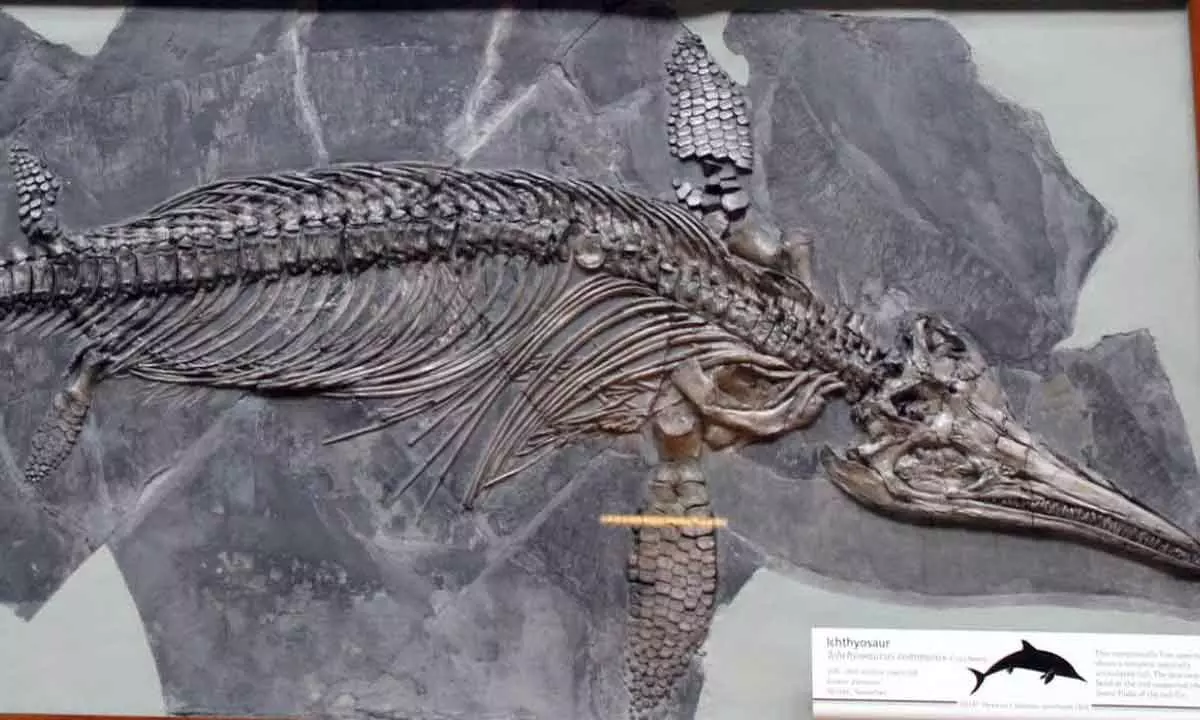Live
- KCR to Kick Off Election Campaign under Palamuru Porubata in Mahbubnagar
- EC announces schedule for Graduate MLC constituency
- YSRCP to focus on development of Vizag: KK Raju
- No ‘truck’ with MIM, shall fight on devpt plank, asserts Sameer
- Special classes for ZP institutions HELP IN IMPROVING academic performance
- SR students get top JEE ranks
- Avanthi exhorts party cadre to strive hard for YSRCP’s victory
- Annual Kumbhotsavam begins at Sri Bhramarambikadevi temple in Srisailam
- Hyderabad: DEO briefs election observers on polling measures
- Alliance MP candidate assures industrial growth
Just In
Chile's First Entire Ichthyosaur Fossil Was Discovered


Representational image of an ichthyosaur skeleton
- Researchers from Magallanes University in Chile discovered the fossilised remains of Fiona, a four-metre-long pregnant female ichthyosaur.
- The 31-day trip to recover the fossil was exhausting.
Researchers from Magallanes University in Chile discovered the fossilised remains of Fiona, a four-metre-long pregnant female ichthyosaur. This is Chile's first complete ichthyosaur fossil, discovered in a melting glacier deep within the country's Patagonia region. A chopper was used to remove the intact remains.
The ichthyosaur fossil, which was discovered in 2009 but not extracted until now, contains many embryos. The 31-day trip to recover the fossil was exhausting. The remarkable ichthyosaur is the world's only pregnant female from the time period — between 129 and 139 million years ago — discovered and retrieved.
The excavation will help researchers learn more about the animal's species, the palaeobiology of embryonic development, and any diseases it may have had during its life.
From the Tyndall Glacier in Chile's Patagonia region, scientists successfully retrieved one of the world's most complete ichthyosaur fossils with intact embryos. Scientists named the preserved and pregnant ancient marine lizard "Fiona." Scientists will be able to investigate embryonic development in ichtyosaurs, which lived between 90 and 250 million years ago and roamed the seas.
Judith Pardo, the scientist who discovered the fossil, described it as the sole pregnant ichthyosaur that has been found on the earth from the timeframe between 129 and 139 million years ago.
The fossil was discovered more than a decade ago by Pardo, a palaeontologist at Magallanes University's GAIA Antarctic Research Center, but the site's extreme temperature conditions, hard terrain, and remoteness made retrieval a logistical problem.
The fossil had to be helicoptered out of the site after scientists spent 31 days removing it. Paleontologists stated they had to extract five blocks weighing 200 kilos to keep the bones intact since the fossil was so complete.
The fossil is currently being prepped for display at Chile's Rio Seco Natural History Museum. During the effort, scientists unearthed 23 ichthyosaur specimens, bringing the total to about 100 in the Tyndall Glacier and making it one of the most prolific and well-preserved ichthyosaur locations on the planet.

© 2024 Hyderabad Media House Limited/The Hans India. All rights reserved. Powered by hocalwire.com






